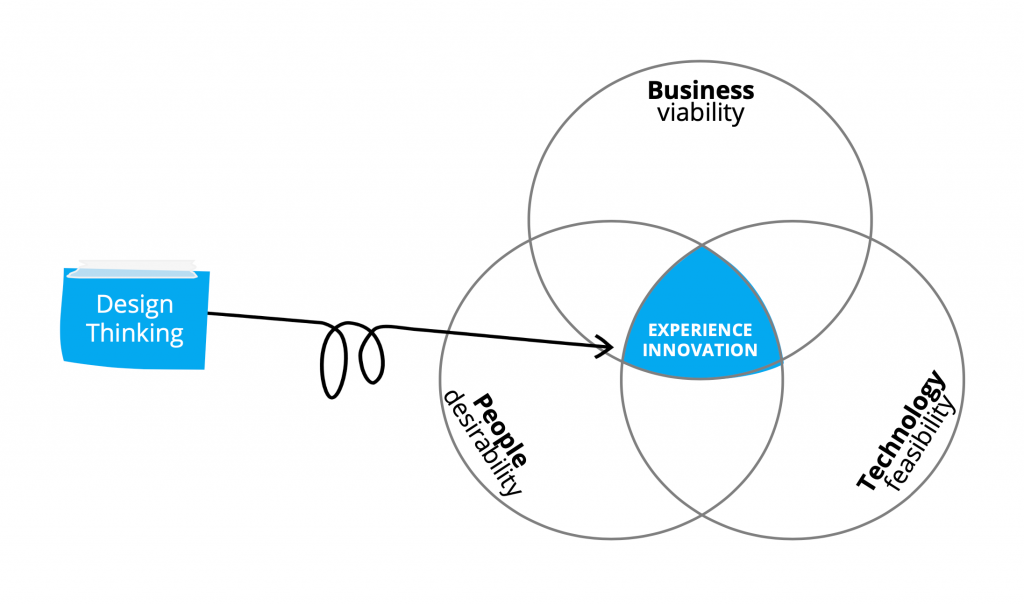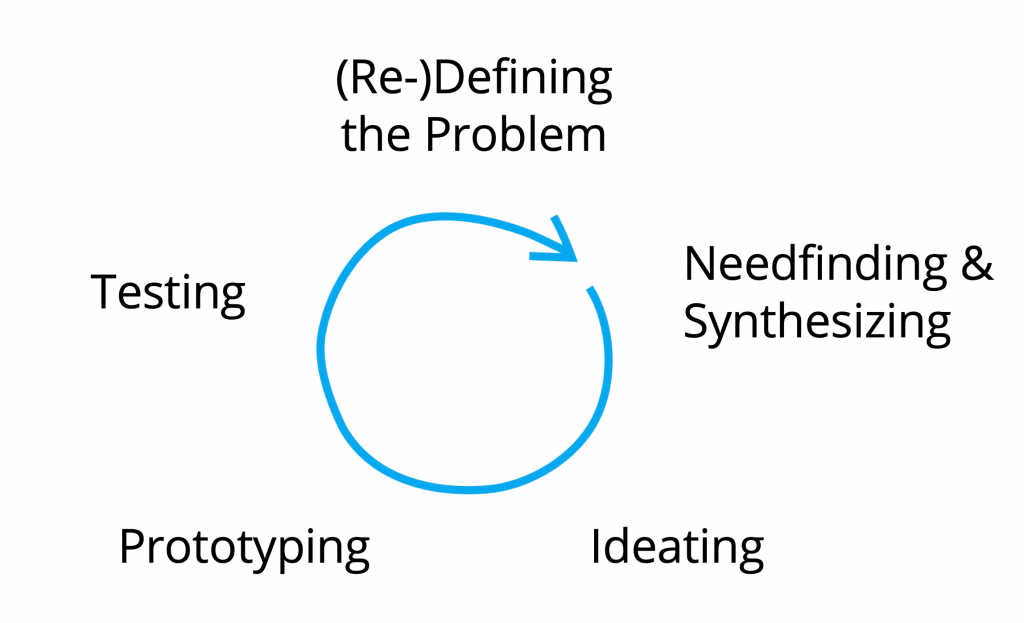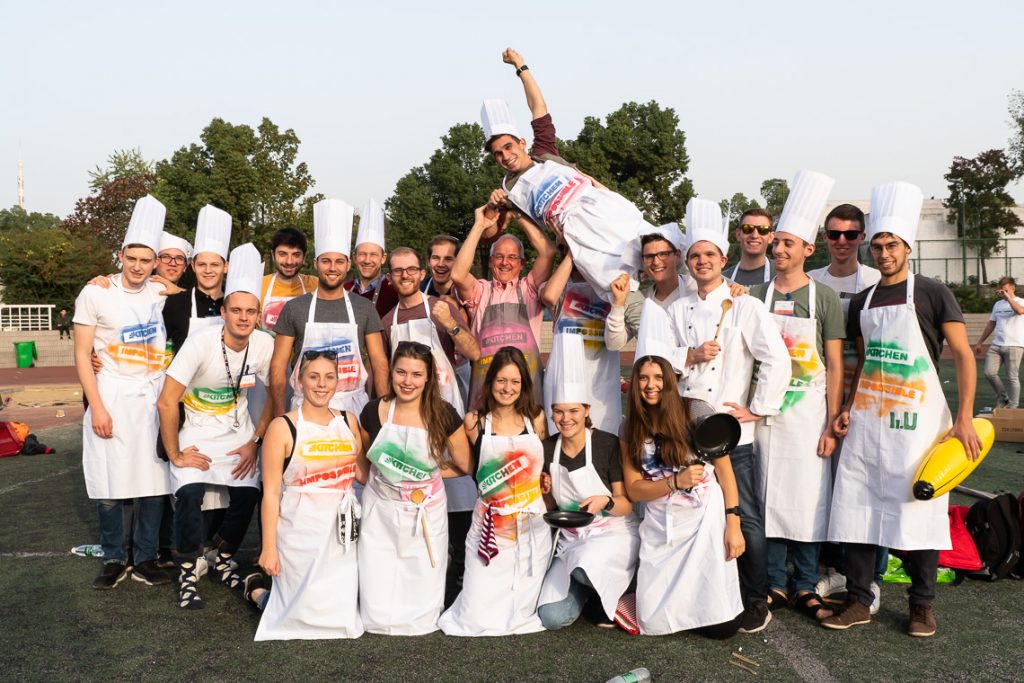The Service Design Thinking Methodology
Steve Jobs said it in a nutshell: “Think different!”. The correct phrase, of course, would be: “Think differently!”.
With this, he had expressed the essence of design thinking: don’t necessarily do what is expected as being the right thing.Larry Leifer
Service Design Thinking
a human-centric Approach
Design Thinking (DT) approaches innovations from a human-centric perspective. Hence, in a DT project we aim to understand peoples’ preferences and needs in order to create solutions that resonate with them: Ultimately, user demand determines the success of a product or service. In addition, in Service Design Thinking we complement DT by taking key characteristics of services into account, such as intangibility, and adjust the approach accordingly. For instance, we introduce prototyping techniques for services and emphasize architectural innovation.


The Micro-cycle
Design Thinking is not only human-centric but also prototyping-intensive and, in particular, iterative in nature. Correspondingly, the basis of the Design Thinking approach is the so-called micro-cycle. It guides us to the discovery of innovative solutions: We conduct (Re-)Defining the problem, needfinding, ideating, prototyping, and testing repeatedly in order to converge to a convincing solution.
(Re-)Defining the Problem
We know that we don't know
In our initial step in a Design Thinking project we analyze and reflect on the provided innovation challenge. This includes a decomposition of the challenge description in terms identifying clearly what we shall innovate, what key problem we need to solve, who our main addressees of the innovation might be, what major constraints we need to take into account, and so forth. The outcome of this step is a common, current understanding of the innovation challenge. We will revisit this understanding and potentially modify it at the end of each micro-cycle.
Needfinding
Three Ways to discover the needs of Individuals
Design Thinking is a human-centric innovation approach. Hence, for us it is critical to understand the needs and preferences of stakeholders who are essential to our given innovation challenge, e. g. users. For this endeavor, three categories of techniques are conducive: Learning about users’ need by (1) observing them, (2) interviewing them, and (3) immersing ourselves into the situation of the users, i.e. conducting self-experiments by interacting with the users’ environment. Subsequently, we synthesize our findings into a problem statement formulated from the perspective of our user in question.

Interview

Observe

Interact
Ideating
More than just brainstorming
Now that we have a clear understanding of the innovation challenge in general as well as from a user’s perspective, we can start creating solutions. In other words, we need to become creative. For this we make use of a series of techniques. Among others, the most insightful ones are working with “analogies”, i.e. using similarities between our challenge (or parts of it) and known solutions in unrelated fields, and “reframing”, i.e. relaxing or inverting our explicit and implicit assumptions related to the challenge.
6-3-5 Method
Six Thinking Hats
Story Cubes
Nominal Group
Re-Framing
Analogies
Prototyping
Of low- and high-resolution Prototypes
With several ideas for potential solutions on the table, we now need to find a way to evaluate them. For this, we use different kinds of prototypes for different purposes along our way: Low-resolution allow a quick depiction of an idea while high-resolution prototypes provide a realistic impression of functionality and appearance.
Nevertheless, irrespective of the resolution, prototyping is all about communicating. Each prototype makes ideas visible and tangible – and thus paves the ground for testing our ideas with users.
Analog
Low-Fidelity
Digital
High-Fidelity
Iterative
learning
Testing
Show, don't tell
In the testing phase we use our prototypes to learn more about our users, their preferences, needs and perspective on the innovation challenge. So, it is not about selling the own idea, not about persuading the users – it’s just about showing the prototype and observing the users and listening to them carefully. With the gained learnings it is time to start the cycle once again: Are we asking the right questions? Do we look at the right problem? Did we learn something new about our users?


